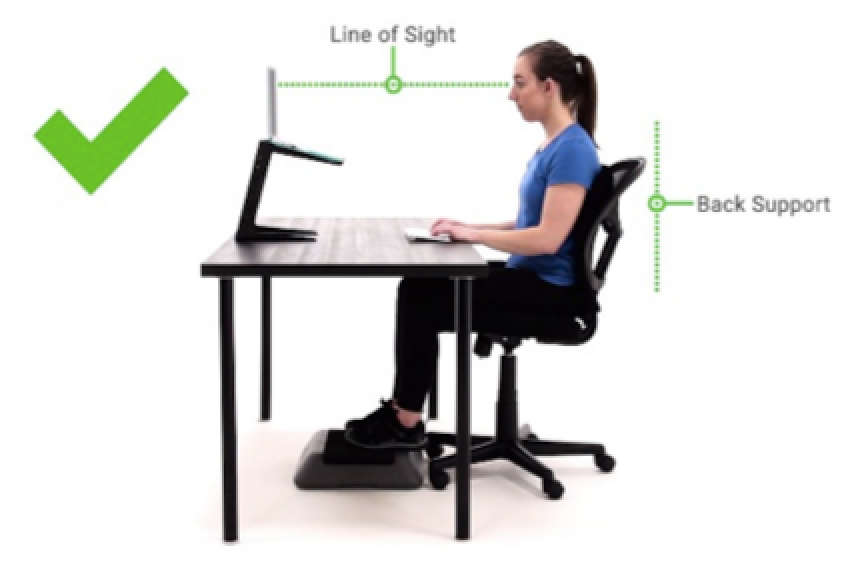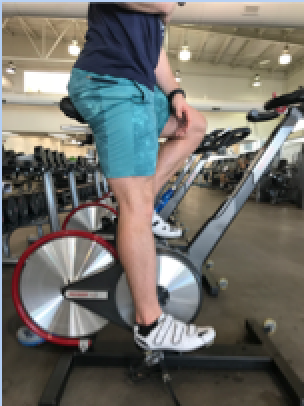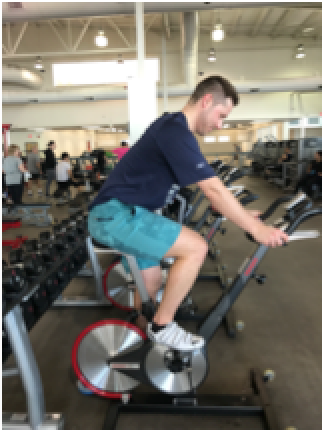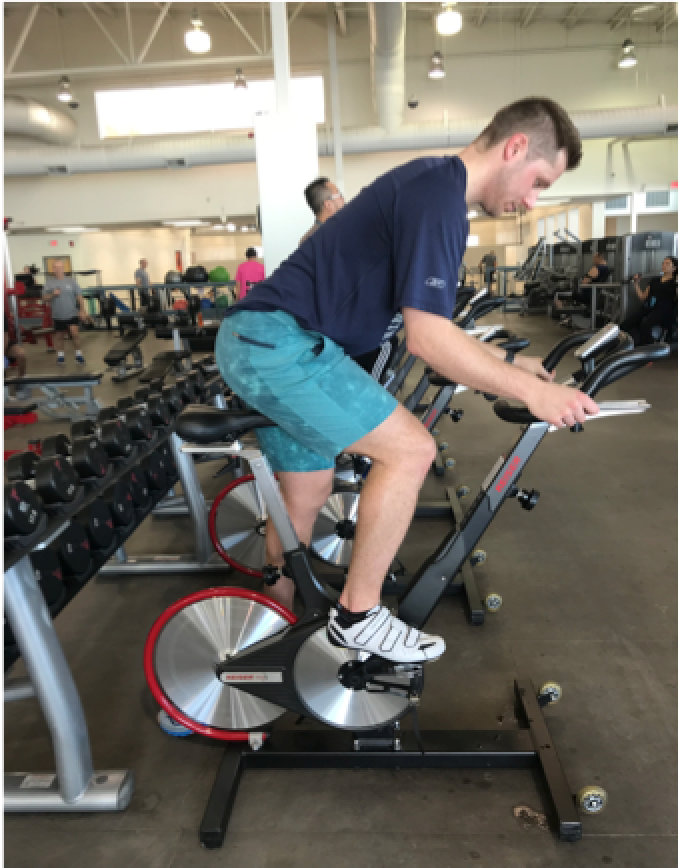Posture, Posture, Posture
We have all been told, at some point in our lives, that posture is important. But why? What defines good posture? When do we need to have it?
Posture can be dynamic. That means it changes with what we are doing and when we are not doing anything. There is an optimal posture for sitting, standing, golfing, running, cycling, swimming, etc. Let’s look at some of the common postures most of us encounter on a daily and weekly basis.
Optimal sitting posture supports normal lumbar lordosis with a relaxe
d thoracic spine. This is the most efficient state for the discs, ligaments, vertebral bodies and muscles. Here’s a picture:
Taken from: https://www.medbridgeeducation.com/patient_care/programs/create#
Key components to maintain when sitting are: your feet flat on the floor, your lower back supported, your ears in line with your shoulders. However, the best thing we can do for promoting good posture is to change it. If you have an office job where sitting takes up more than 50% of your day, then it is very important to stand and walk around a little every 30-60 min. Two minute micro breaks can alleviate the potentially negative strain on our connective tissues. When we are sitting out of optimal posture the ligaments that connect our bones are placed under strain and suffer a phenomenon known as ‘creep’. Creep is when our ligaments stretch beyond their “safe” normal length and progress to stages of length that may result in pain and damage. Creep can occur in 15 minutes in strained positions and then the ligament begins firing off pain signals. Hence the very common diagnosis of posture related pain. The key is to take the 2 minute micro breaks before you start to feel pain.
When sitting or standing in optimal posture our bodies do not use excess energy. The postural muscles of the spine are designed to resist fatigue. Attempting to maintain upright positions outside of optimal places more strain on the postural muscles and results in more energy expenditure.
Common sitting postures that place muscles at disadvantaged lengths include: head forward (ears in front of shoulders), shoulders in front of hips, shoulder blades rounded forward. Falling into these “bad postures” will result in ligament creep and postural muscle over activation and fatigue.
Let’s look at some postural tips for Cycling, Swimming and Running.
Cycling
When seated you should have your seat at a height that allows you to have a slight bend (roughly 30 degrees) in your knee at the bottom of a pedal revolution. You can find this easily by placing your heel on the pedal with your leg straight at the bottom of the revolution (picture A). The handle bars should be at a height and distance that allows you to lean forward from the hips at a 45 degree angle, and have a 90 angle from your arms to your body (picture B). This posture allows for better efficiency and power output. Standing cycle posture leads to more forward lean at your pelvis. This allows your hips to stay back over the seat and activates your gluteus muscles (picture C). Cyclists commonly make the mistake of bringing their hips forward and standing more upright.
Swimming
Improving your swim posture will decrease drag and prom
ote lift through your hips and legs. Here are three simple points to consider when swimming front crawl (freestyle). 1. Head position should be with your eyes gazing a few feet in front of you, so that the water is hitting the top 1/3 of your head. Commonly people look forward and have their head lifted. This will bring your hips down and increase drag. Think chin down eyes up. 2. Draw your shoulder blade down and back, away from your ear, at the end of your forward stroke. This will help recruit the latissimus dorsi and lower fibres of trapezius, decreasing the rolling forward of your shoulder into a slouch position, at the beginning of your pull. Finally, 3. Even in the water, where the effects of gravity are much less, your core muscles matter. Think length, length, length throughout your stroke. By simultaneously reaching and lengthening your forward arm ahead while extending your kicking leg backward, you will activate the deep spine stabilizers (specifically the multifidi). This will allow for a nice straight spine and tight roll as you move through your full stroke.
Running
The topic of running posture and form can be a long one. Now that the weather is improving I wanted to offer a very simple 4 exercise drill to promote basic running posture. The first three are dynamic and are very common in the running world. They are A skipping, B skipping and butt kicks.
1. A’s are a high knee skip at a comfortable pace, focusing on driving your foot into the ground, creating a little bounce.
2. B’s build off the A’s by adding in knee extension (kicking your leg out and down) when your knee is at the top of its drive.
3. Butt kicks are just as they sound. Allow your knees to come forward only slightly and focus on kicking your heel back into your buttock. Make sure to do your best to get your heel to touch your buttock each time. This helps with turn over in your running cycle.
Follow this URL to see a few videos from drills 1-3:
https://www.kintec.net/blog/beginner-running-drills-for-improved-posture/
4. Forward falls. It is important to keep your shoulders relaxed and chest up as you go through drills 1-3. When we run we want to have our body tilted forward slightly in the direction we are going. When you start your run try this drill. Stand with both your feet side by side, relax your shoulders away from your ears and slightly tuck your chin down without letting your head fall forward (keep ears aligned over top your shoulders). Imagine there is a string attached to the top of your head pulling up and feel your spine get long. Then, lean your body forward onto your toes until you are forced to take a step and begin your run!
Drills 1-3 should be performed for 5 sets of 30-60 seconds each as an easy warm-up. Stop and find the neutral posture described in drill 4 and begin your run.
What have we learned? There is an ideal or optimal posture for many activities and even static positions like sitting. Do not beat yourself up and expect to maintain perfect posture all day. Take these tips and start to think about how your posture needs to change depending on what you are doing. Rest breaks from static postures like sitting should be taken every 30 minutes, if possible, and only need to last for a couple of minutes.
Thanks for reading!
Dave Ridgewell MPT, BSc Kin, CAFCI, IMS





